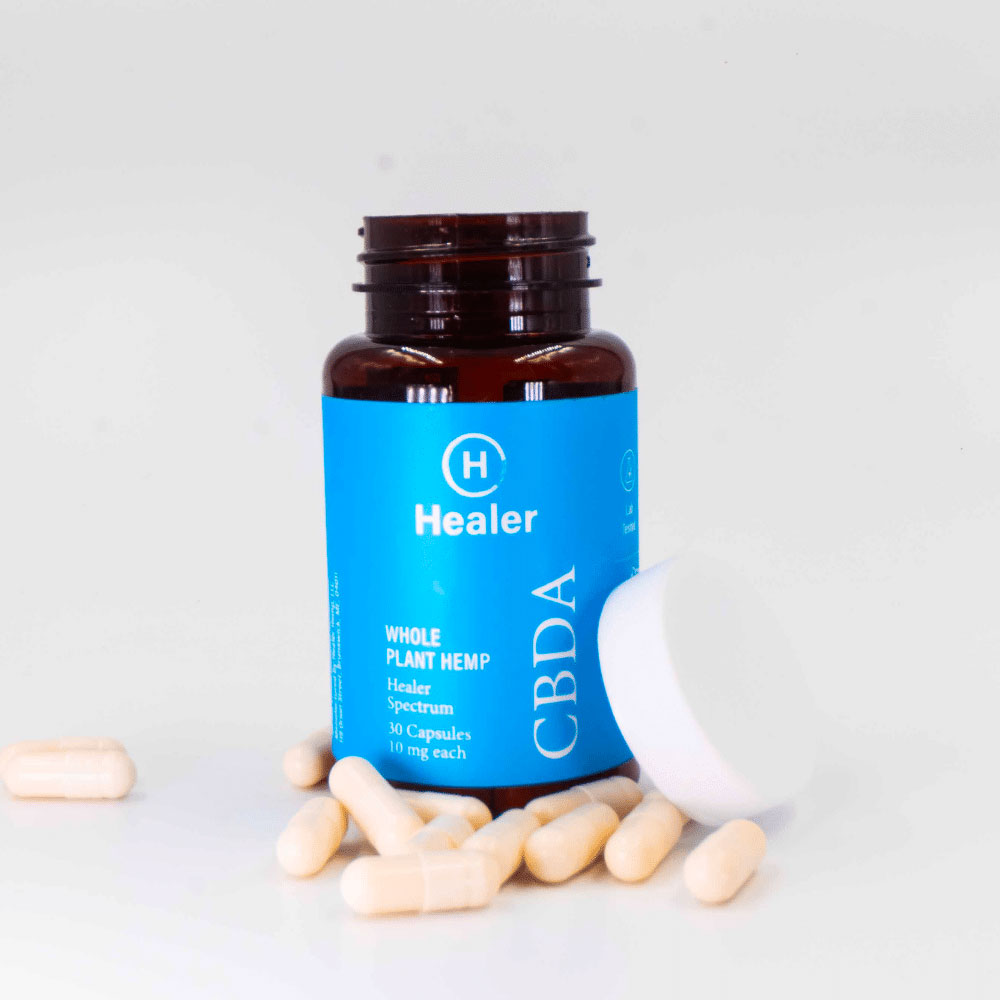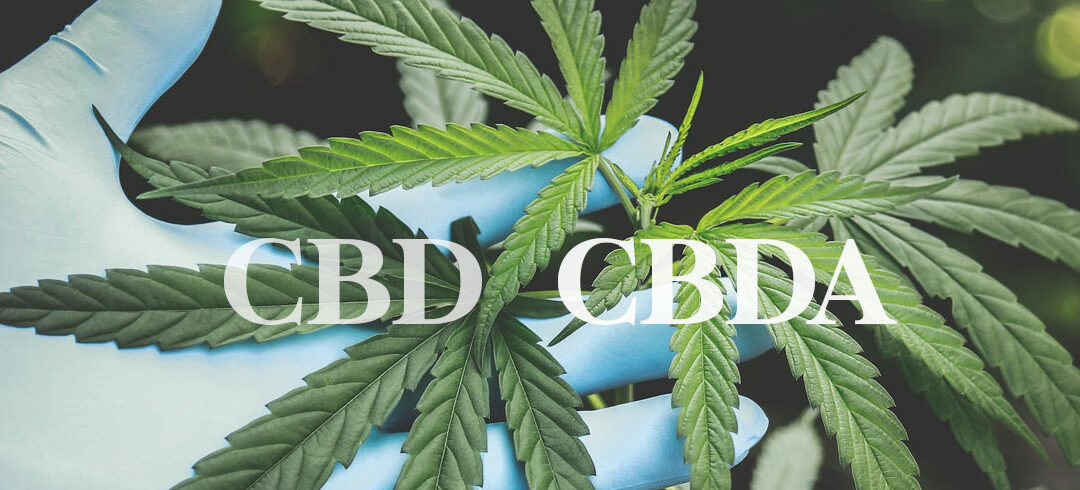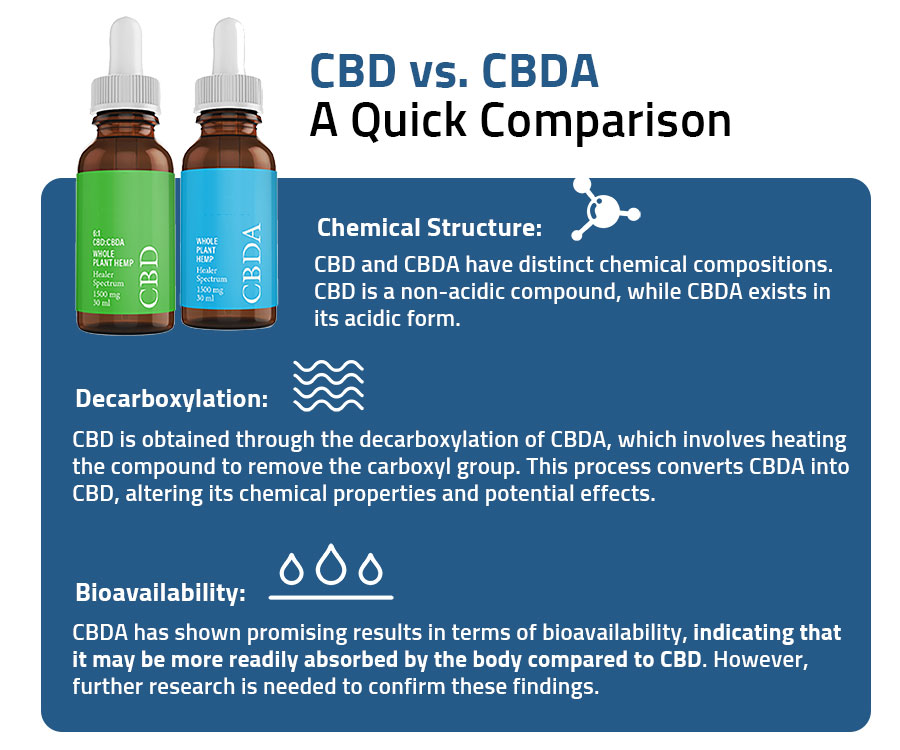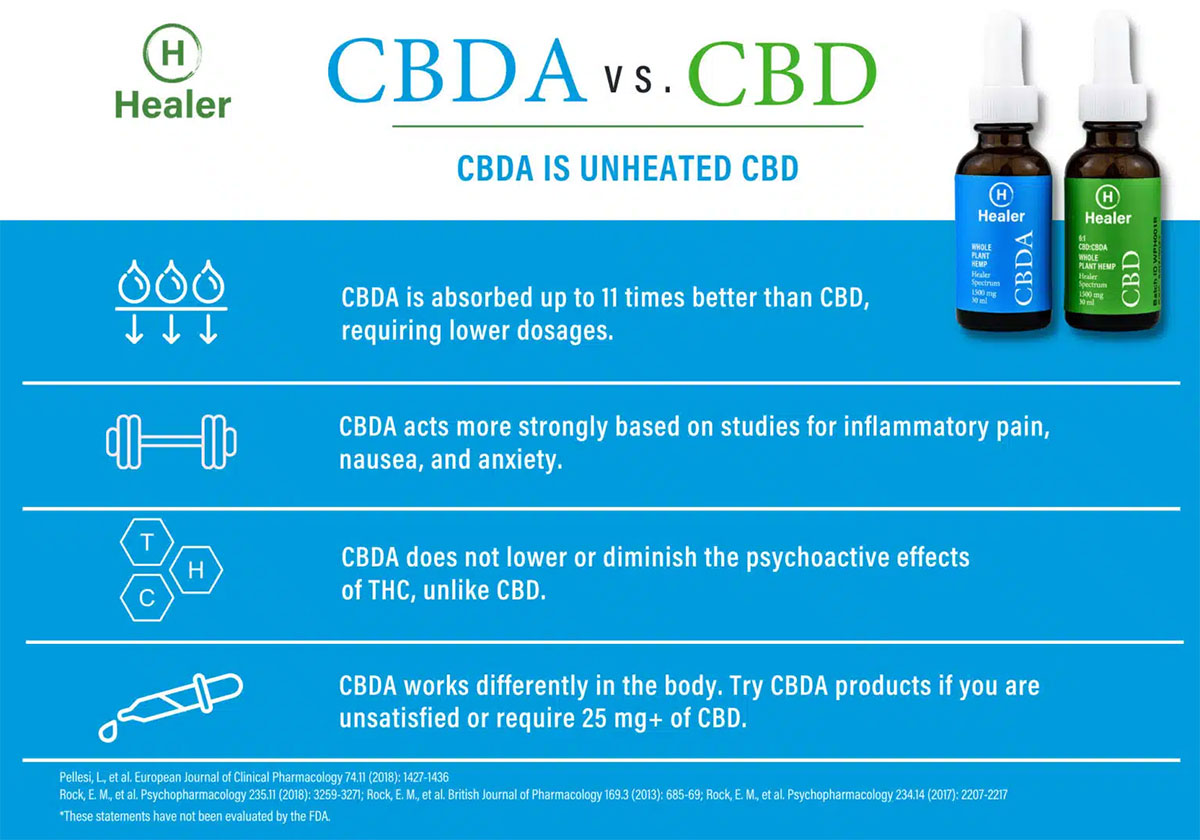There is a surge in interest and research surrounding the potential health benefits of various compounds found in the hemp plant. Two of the most prominent components, cannabidiol (CBD) and cannabidiolic acid (CBDA), have garnered significant attention. While they share a common origin, CBD and CBDA differ in their chemical composition, properties, and potential effects on the human body.
CBDA oil is the unheated form of CBD. “Many are surprised to learn that the hemp plant does not directly produce CBD. The plant actually produces cannabidiolic acid (CBDA) which converts to CBD slowly at room temperature, or rapidly when exposed to high temperatures.” Healer
CBD: The Popular Non-Psychoactive Cannabinoid
Cannabidiol (CBD) is one of the primary cannabinoids found in cannabis plants, typically derived from hemp. Unlike its well-known counterpart tetrahydrocannabinol (THC), CBD is non-psychoactive, meaning it does not induce a “high” sensation. CBD has gained considerable recognition for its potential therapeutic properties and is often used to address various health concerns.
CBD is primarily extracted from the plant material through various methods such as CO2 extraction, which yields a concentrated CBD oil. This oil is then used in various consumer products, including oils, tinctures, capsules, topicals, and edibles. CBD interacts with the body’s endocannabinoid system (ECS) to promote balance and homeostasis, potentially influencing a range of physiological functions.
CBDA: CBD’s Raw and Understudied Precursor
Cannabidiolic acid (CBDA) is the acidic precursor to CBD and is found abundantly in raw, unprocessed cannabis plants. Traditionally, CBDA has been considered an inactive compound, overshadowed by the attention given to CBD. However, recent studies have begun to shed light on its potential therapeutic properties.
CBDA is commonly found in raw cannabis juices, which are made by extracting the juice from fresh cannabis leaves and flowers. Unlike CBD, CBDA has not undergone decarboxylation, meaning it retains its acidic form. While research on CBDA is still limited, preliminary findings suggest that it may possess anti-inflammatory, anti-nausea, and anti-anxiety properties.
Both CBD and CBDA are non-impairing, non-intoxicating cannabinoids and help support body and mind. But there are some differences between the two.
- Some studies have also indicated that CBDA may have greater bioavailability than CBD, meaning it may be more easily absorbed by the body.
- CBDA and CBD both have anti-inflammatory properties, but may act via different mechanisms in the body. For example, unlike CBD, CBDA has been shown to decrease the activity of the COX-2 enzyme, an enzyme responsible for increasing inflammation. National Library of Medicine
- CBDA may be more potent than CBD for some applications to help with nausea, anxiety, and inflammation.

CBDA Capsules are a convenient method, which has a slower onset than drops but long-lasting effects. Ideal for those who have difficulty administering drops, are sensitive to taste, or who prefer capsules to drops. Learn more here.
CBDA vs. CBD
CBD and CBDA both work similary to influence biological systems within our bodies (endocannabinoid system). But CBDA has many important differences that make it even more powerful, namely CBDA is better absorbed (5-11 times better)[1] and acts more strongly in the body regarding pain & inflammation after physical activity, symptoms of nausea, and worry. National Library of Medicine
You’ll see better results at lower dosages when using CBDA products compared to CBD. If you have tried CBD without much success, don’t assume CBDA won’t help.
photo credit: Healer
*These statements have not been evaluated by the Food and Drug Administration.
Consult your physician before starting, stopping, or changing your health regimen, and to determine what course of therapy is right for you. Always seek consultation if you are pregnant, nursing, have or suspect you have a medical condition, or are taking any medications to discuss potential interactions or complications. The information presented here is not a substitute for or alternative to information from your healthcare providers.




